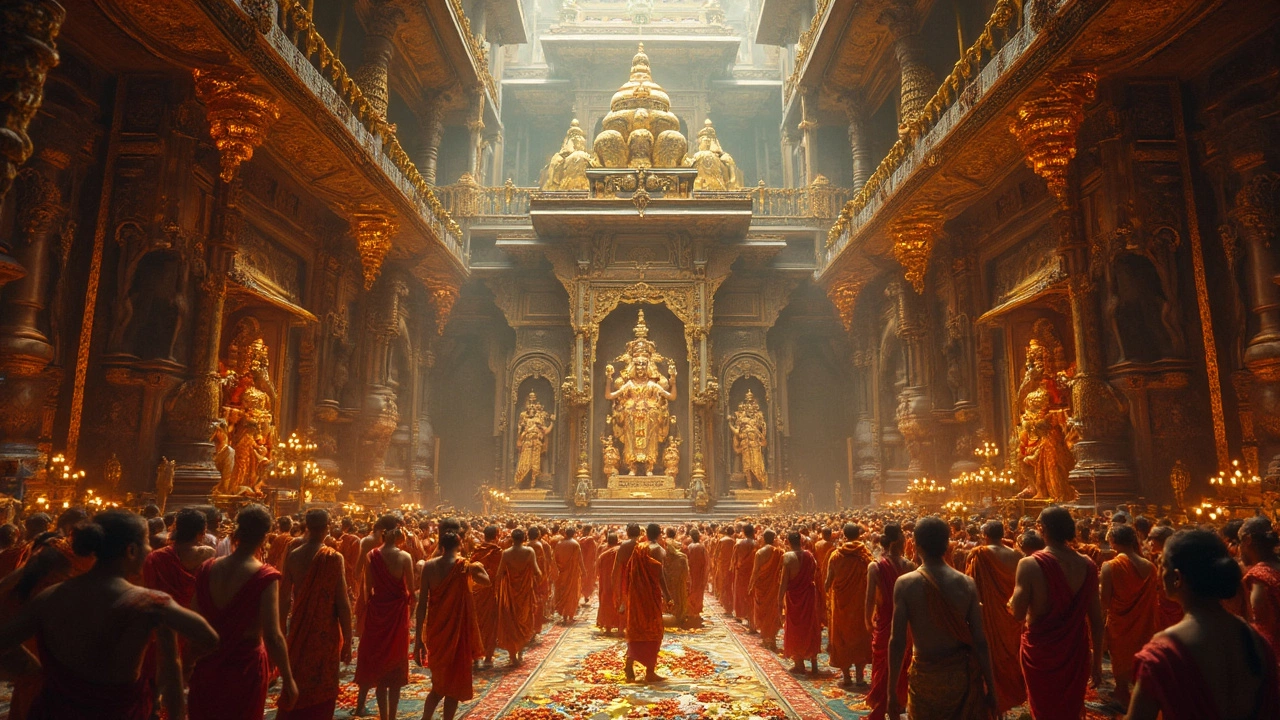Indian Temple – Culture, Architecture & Jewelry Explained
When talking about Indian Temple, a sacred space in Indian culture where worship, art, and community converge. Also known as Mandir, it serves as the heart of spiritual life across India. The Temple Architecture, the style, layout, and decorative elements that define a shrine shapes the visual story, while Temple Rituals, the sequence of prayers, aartis, and offerings performed by devotees give the space its living pulse. Adding a personal touch, Temple Jewelry, ornamental pieces like mangalsutra, bangles, and nose pins worn during worship reflects individual devotion and cultural identity. Together, these elements create a dynamic ecosystem where architecture supports ritual, ritual inspires jewelry choices, and jewelry reinforces the sacred atmosphere.
Understanding an Indian temple means looking at how its design accommodates specific rites. For instance, the sanctum sanctorum (garbhagriha) is purposefully built to house the deity’s idol, creating a focal point for darshan and offering. Surrounding the core, the mandapa provides space for communal singing and dance, linking architecture directly to ritual performance. This connection is why many temples feature built‑in niches for incense, water vessels, and even dedicated spots for displaying temple jewelry during festivals. When devotees wear a mangalsutra or a pair of traditional bangles, they are not just accessorizing—they are echoing centuries‑old symbolism that ties personal milestones to the divine space.
Why These Elements Matter for Modern Readers
Today, anyone interested in Indian culture—whether you’re planning a visit, studying heritage, or shopping for authentic jewelry—benefits from grasping these links. Knowing the architectural grammar helps you navigate a temple’s layout, understand why certain rituals happen in specific zones, and appreciate the meaning behind the jewelry you might buy. For example, a nose pin often symbolizes marital status in many regional traditions, a detail that becomes clear when you see it worn during a temple ceremony. Likewise, the choice of gold purity in a mangalsutra can reflect both personal budget and cultural expectations, a nuance highlighted in many of our articles.
Below you’ll discover articles that break down related topics in depth: from the best gold purity for mangalsutra to the symbolism behind nose pins, from the economics of buying diamonds in India versus the USA to the latest jewellery trends for 2025. Each piece builds on the foundation laid out here, giving you a well‑rounded view of how Indian temples, their rituals, and their jewellery intersect in everyday life and special occasions.
Ready to dive deeper? Browse the collection to see how tradition, design, and personal style come together in the vibrant world of Indian temple culture.
